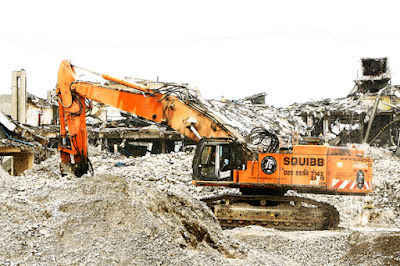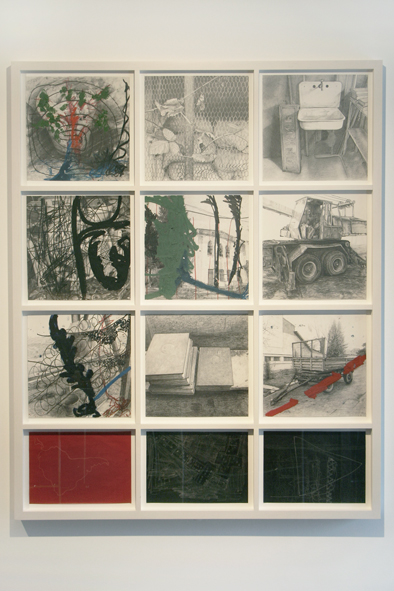 |
| All Images, Leicester And Nottingham, June - July 2019 |
As I intimated in my last post, I've spent a lot of recent hours photographing major building work. There's plenty of that going on in my own Leicester back yard - and in Nottingham, where I'm a regular visitor, also.
It definitely feels like it will probably trigger a new body of work, in coming months. However, for now - it just feels like I'm in a gathering phase. It's usually only after a period of immersion in the field that certain themes and associations really start to coalesce around a category of subject matter, and I'd never want to be without this process of just 'getting in among it' with the camera. There's already the odd glimmer of something emerging, thematically - but mostly, I'm just happy to indulge myself with the sensory overload of all this stuff, at present.
Of course, there's a difference between the various meanings to be found in a subject, and the purely visual/formal correlations (closely connected though they may become). One thing that's pretty obvious is that large construction sites are an absolute gift to my love of complex visual structures and formal geometry - as is amply demonstrated in this first little batch of images.
I remember, as a student, being advised to let imagery evolve organically, by grouping visual material, be it primary sources or secondary influences, into connected categories - however simplistic. Often, the easily made, immediate connections start to give way to other, less obvious, associations, in time.
In this case, everything here fits neatly into a pigeonhole labelled 'meshes and grids', and it's all pretty frontal and parallel to the picture plane. So far - so much something I've always always loved. But already, I'm also starting to think about relative degrees of complexity, and the introduction of disruptors into modular systems, as well as the whole idea of layering, and the compartmentalising of space, in three as well as two dimensions. There also seems to be something worth exploring about just how many different ways there might be to fill-in space, both pictorially, and in terms of the urban landscape, in all of these.
That'll do for now, then. There'll almost definitely be a load more to follow, as the year progresses...



































































